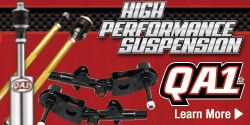dgc333
Well-Known Member
Sorry, but this is incorrect. Look at this calculator.
http://www.kb-silvolite.com/calc.php?action=piston
See where it says "Note: A piston with a positive number is either a flat-top with valve reliefs or a dish. A piston with a negative number is a pop-up."
The reason for this is because of what I stated the first time. A domed piston has a negative cc measurement since it takes away from the combustion area. A flat or dished piston has a positive number because it adds to the combustion area. It's just that simple.
If you read my entire post you would have seen where i said to enter the number the way the calculator tells you too. The one I use states to enter a dish or valve reliefs as a negative number. It's just matter of how the formula in the program is constructed. One isn't correct and one wrong as long as they give you the correct answer.
















